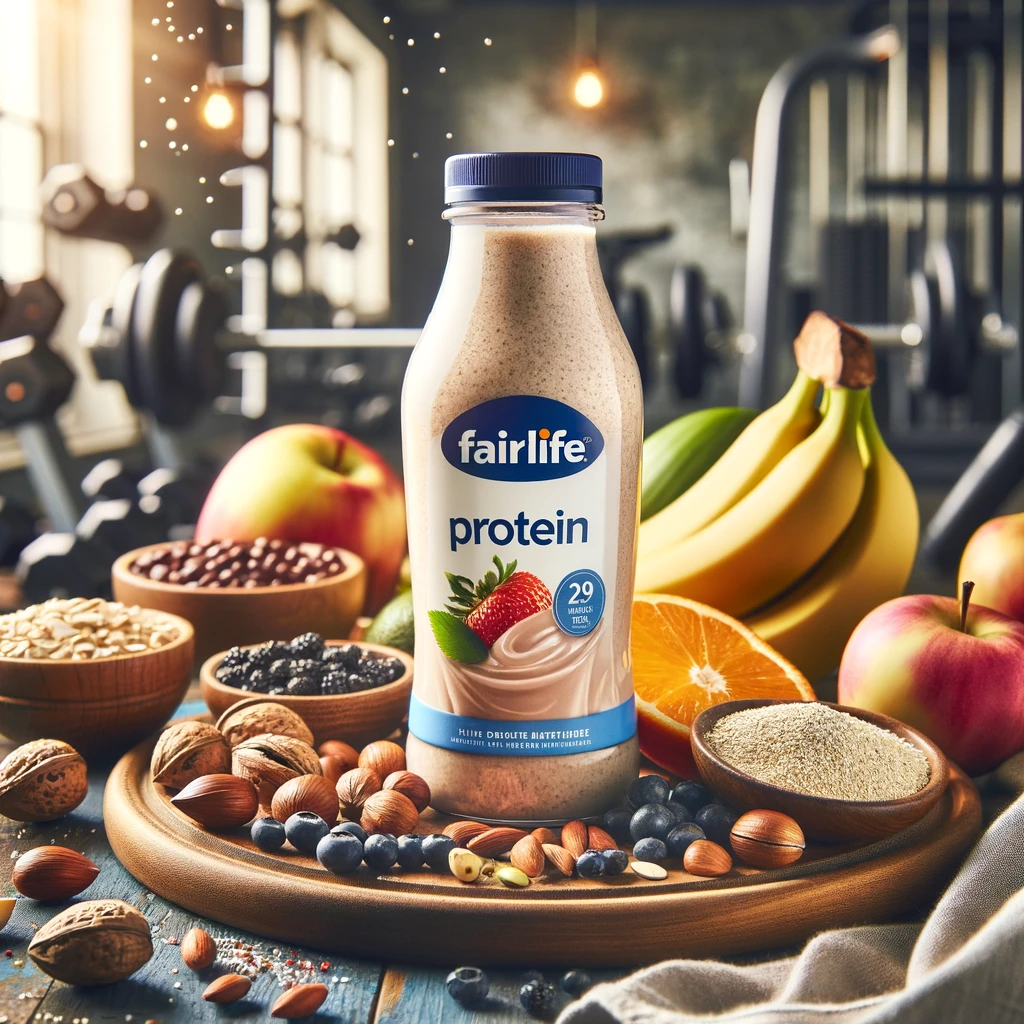Is Fairlife Protein Shake Bad for You?

Key Takeaways
1. Fairlife protein shakes offer a high protein content with reduced sugars and lactose, appealing to fitness enthusiasts and those with lactose intolerance.
2. Despite their emphasis on sustainability and animal welfare, concerns arise regarding the presence of additives and sweeteners in Fairlife shakes.
3. The debate over whether Fairlife shakes are “bad” for you involves expert opinions on nutritional content and real-world consumer feedback, highlighting the importance of informed decision-making.
4. While Fairlife offers a convenient protein source, individuals should consider alternative protein options and the ethical implications of their dietary choices to align with their health and sustainability goals.
In the quest for a healthier lifestyle, protein shakes like Fairlife have become a staple in many diets. But, with the rising concerns over processed foods, one can’t help but wonder, “Is Fairlife protein shake bad for you?” This article delves deep into the world of Fairlife protein shakes, examining their ingredients, benefits, and potential drawbacks to provide a well-rounded perspective.
What Is Fairlife Protein Shake?
Ingredients and Nutritional Value
Fairlife protein shakes boast a unique filtration process that enhances protein content while reducing sugars and eliminating lactose. With a mix of essential vitamins and minerals, these shakes promise to support your dietary needs effectively. However, a closer look at their ingredients list reveals the presence of additives and sweeteners, prompting a discussion on their overall healthfulness.
The Fairlife Promise
Fairlife emphasizes sustainability and animal welfare in their production process, appealing to ethically conscious consumers. But, does this commitment to quality extend to the nutritional aspect of their products?
Benefits of Fairlife Protein Shakes
High Protein Content
With a significant protein punch in every serving, Fairlife shakes can aid muscle recovery and growth, making them a favorite among athletes and fitness enthusiasts. Additionally, their lactose-free formula opens the door for those with lactose intolerance to enjoy the benefits of a high-protein diet without discomfort.
Lactose-Free
The lactose-free aspect of Fairlife shakes not only caters to those with lactose intolerance but also to individuals seeking to reduce dairy intake due to personal health reasons or dietary preferences.
Concerns About Fairlife Protein Shakes
Sugar Content
Despite their reduced sugar content, the inclusion of sweeteners in Fairlife shakes raises questions about their impact on blood sugar levels and overall health.
Artificial Ingredients
The presence of artificial ingredients and additives in Fairlife protein shakes is a point of contention for health-conscious individuals seeking whole, unprocessed foods in their diet.
Comparing Fairlife to Other Protein Shakes
Nutritional Comparison
When stacked against competitors, how does Fairlife’s nutritional profile hold up? This section compares key nutritional aspects, such as protein content, sugar levels, and ingredient quality, to other popular protein shake brands.
Taste and Texture
Taste and texture are crucial factors in the world of protein shakes. Fairlife’s unique filtration process claims to offer a smoother, more palatable experience. But how true is this claim?
Are Fairlife Protein Shake Bad for You?
Whether Fairlife protein shakes are “bad” for you depends on various factors, including your individual health needs, dietary preferences, and overall lifestyle. Fairlife protein shakes are marketed as a convenient source of protein, and they typically contain a blend of dairy proteins, vitamins, and minerals.
Here are some considerations:
- Nutritional Content: Fairlife protein shakes generally contain a good amount of protein, which can be beneficial for muscle recovery, satiety, and overall health. However, it’s essential to check the nutritional label for added sugars, artificial additives, and other ingredients that may not align with your dietary goals.
- Calories: Depending on your nutritional needs and goals, the calorie content of Fairlife protein shakes may be either advantageous or excessive. If you’re using them as a meal replacement or a post-workout recovery option, the calorie content might be appropriate. However, if you’re trying to manage your weight, you should consider the calorie intake from these shakes in the context of your overall diet.
- Allergens and Sensitivities: Fairlife protein shakes are dairy-based, so they may not be suitable for individuals with lactose intolerance or dairy allergies. Additionally, some people may have sensitivities to certain ingredients or additives found in the shakes.
- Processing and Additives: Like many packaged food products, Fairlife protein shakes undergo processing and may contain additives for flavor, texture, or shelf-life extension. While some additives are generally recognized as safe, others may be controversial or potentially harmful, depending on individual sensitivities or health conditions.
- Individual Health Considerations: It’s essential to consider your individual health status and dietary needs when evaluating the suitability of Fairlife protein shakes for you. If you have specific health conditions or dietary restrictions, it’s a good idea to consult with a healthcare provider or a registered dietitian before incorporating these shakes into your diet.
Fairlife protein shakes can be a convenient option for increasing protein intake, but like any processed food product, they should be consumed in moderation and as part of a balanced diet. It’s essential to consider factors such as nutritional content, additives, and individual health considerations when determining whether these shakes are a suitable choice for you.
Expert Opinions
Health and nutrition experts weigh in on the debate, offering their perspectives based on the nutritional content and ingredient list of Fairlife shakes.
Consumer Feedback
Real-world testimonials from consumers who have incorporated Fairlife into their diets provide insight into the product’s impact on health and wellness.
How to Incorporate Fairlife Protein Shakes into a Healthy Diet
Recommended Servings
Understanding the right amount and frequency of protein shake consumption is key to maximizing benefits while minimizing potential risks.
Alternative Protein Sources
For those seeking diversity in their protein sources, this section explores other nutritious options that can complement or substitute for protein shakes in a balanced diet.
Fairlife Protein Shake Recipes
Transform your Fairlife protein shake into a delicious, nutrient-packed smoothie with these creative recipe ideas.
Protein-Packed Snacks
Beyond shakes, discover how Fairlife protein can be integrated into healthy snacks for an extra protein boost.
The Ethical Aspect of Choosing Fairlife
Company Practices
A look into Fairlife’s commitment to ethical practices, animal welfare, and sustainability efforts. How do these factors influence consumer choices?
Sustainability Efforts
Fairlife’s efforts to reduce environmental impact through sustainable packaging and production processes are explored, highlighting the brand’s role in promoting a healthier planet.
Conclusion
In conclusion, whether Fairlife protein shake is bad for you depends on a variety of factors including personal health goals, dietary restrictions, and ethical considerations. By understanding the nutritional content, potential benefits, and concerns associated with Fairlife shakes, individuals can make informed decisions that align with their health and wellness objectives.



